Undeniably, hiking is a rewarding pursuit that immerses you in nature, offers an exhilarating physical challenge, and provides a sense of tranquility away from everyday stresses.
However, it is also an activity that demands a degree of responsibility and preparation to ensure personal safety and the preservation of our natural landscapes.
In this discussion, we will carefully explore the crucial safety measures every hiker should know before embarking on a trek. From the initial research stages of a hike, through to the hike itself, we will provide a comprehensive guide on how to responsibly enjoy this pastime.
And while we will cover important points, such as trail research, gear selection, and wildlife encounters, there are still numerous aspects left untouched, urging us to further explore this vast topic.
Key Takeaways
- Research the trail and understand its challenges
- Pack appropriate gear and check weather forecasts
- Inform someone of your hiking plans and carry a first aid kit
- Stick to designated trails, follow Leave No Trace principles, and be prepared for emergencies
Understand Hiking Risks
Embarking on any hiking adventure entails confronting a myriad of potential risks, including unpredictable weather patterns, trail obstacles, and the necessity for careful planning and preparation. Understanding hiking risks, therefore, is a fundamental step before you hit the trail. It's important to acknowledge that the allure of the outdoors often comes with inherent dangers that could turn a delightful journey into a perilous ordeal if not adequately prepared.
Researching the trail beforehand can provide crucial information about its condition and the possible challenges it may present. This step also involves checking weather forecasts to anticipate any sudden climate changes that could potentially endanger the hiker. It's equally important to inform someone of your hiking plans for safety reasons.
Furthermore, having a first aid kit is essential in case of injuries, and staying hydrated prevents exhaustion and heatstroke. Recognizing when conditions are unsafe and knowing when to turn back can literally save your life.
Lastly, your gear – appropriate clothing, sturdy footwear, and navigation tools – can make a significant difference in your hiking experience. By following these 15 hiking safety tips, you will significantly mitigate risks, fostering a safer and enjoyable hiking adventure.
Importance of Hiking Preparation
Hiking preparation is pivotal in ensuring a safe and enjoyable outdoor adventure.
Crucially, this involves initial planning, which includes researching the area, charting the route, and communicating your plans to others.
Assessing weather conditions is also integral to this process, as it informs the type of gear to be carried and the viability of the hike itself.
Essential Pre-hike Planning
Adequate pre-hike planning is a critical aspect of ensuring a safe and enjoyable expedition. It requires thorough research of the selected trail, careful monitoring of weather conditions, strategic route planning, and the appropriate selection of essential gear. This is one of the essential hiking safety tips to remember.
Consider these essential pre-hike planning steps:
- Research the Trail: Understand the terrain and conditions.
- Monitor Weather and Trail Conditions: Prepare for potential changes in weather.
- Share Your Plans: For safety, inform someone of your route and expected return time.
- Plan Your Route and Itinerary: This ensures a smooth and organized hike.
Belonging to the well-prepared hikers' community means adhering to these guidelines, which are crucial for your safety on the trail.
Navigating Weather Predictions
Understanding and navigating weather predictions is a crucial aspect of hiking preparation, and it can significantly impact your safety and enjoyment on the trail. Checking the weather forecast is a vital first step before any expedition; it enables you to prepare for potential changes in weather, ensuring you pack the appropriate gear.
Rain gear and extra clothing are essential items to consider. Staying hydrated and having adequate food supplies are also significant, especially in fluctuating weather conditions. It's important to remain aware of your surroundings and be ready to turn back if conditions worsen.
Staying updated with weather alerts while on the trail can help prevent weather-related hazards, prioritizing your safety during your hiking adventure.
Choosing the Right Gear
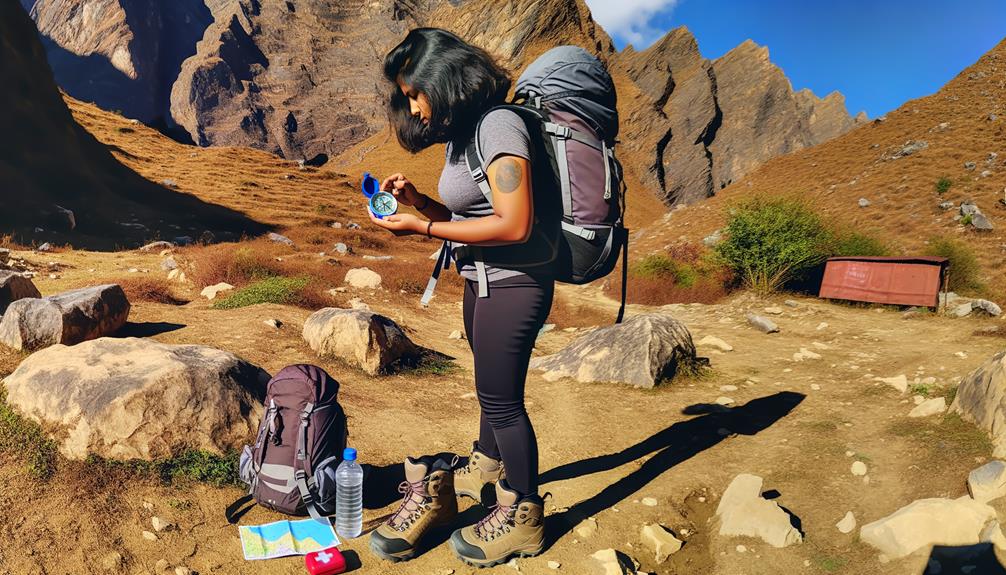
Navigating through the myriad aspects of hiking, selecting the appropriate gear plays a crucial role in ensuring safety and comfort during your outdoor adventure. The process of choosing the right gear can be simplified by focusing on four primary elements:
- Appropriate Clothing: Opt for moisture-wicking fabrics that keep you dry and comfortable. Also, ensure to pack rain gear to stay prepared for unexpected weather changes.
- Hiking Boots: Your feet carry you through the journey, hence investing in sturdy and comfortable hiking boots is essential. They provide the necessary support and traction on varied trail surfaces.
- Hydration: Water is a non-negotiable element in your hiking gear. Keep enough water to stay hydrated throughout the hike.
- Energy Food and Navigation Tools: Carry energy-boosting foods and a packed lunch. Also, don't forget to include essential navigation tools such as a map, compass, or GPS device.
In essence, the gear you choose forms a protective layer between you and the unpredictable elements of nature. The right selection not only enhances your hiking experience but also ensures you stay safe while embracing the great outdoors.
Assessing Your Fitness Level
Before embarking on a hiking adventure, it is imperative to assess your fitness level, taking into account factors such as endurance, strength, and past hiking experiences. Day hiking requires a certain level of physical activity, and understanding your abilities is crucial for a safe and enjoyable hike.
When assessing your fitness level, consider your endurance and strength. Can you handle the physical demands of the hike? Evaluate your past hiking experiences. Did you cope well with the exertion? If you're a novice, it's advisable to start with less demanding trails and gradually take on more challenging ones as your fitness improves.
Consulting with a healthcare professional is also recommended. They can provide a clear picture of your physical health and suggest any necessary precautions. If you have any health conditions, share this information with them to ensure you're not putting yourself at risk.
Lastly, be honest about your limitations. Overestimating your capabilities could lead to unnecessary strain or injury. Choose hiking trails that align with your fitness level. Hiking should be a rewarding experience, not a test of endurance. By assessing your fitness level accurately, you can ensure a safe and satisfying hike.
Pre-Hike Safety Checks
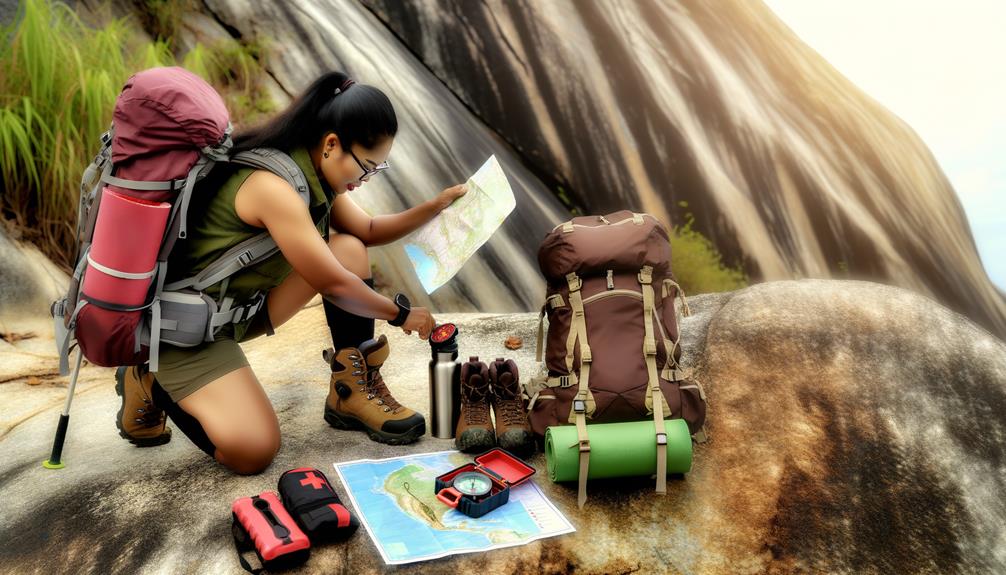
Ensuring a safe and enjoyable hike begins with a series of pre-hike safety checks that include inspecting your gear, monitoring weather and trail conditions, packing essential items, assessing your physical readiness, and informing someone of your plans.
- Inspect your gear: Before you hit the trail, check the condition of your gear. Ensure your backpack, footwear, and clothing are in good shape for the journey. This helps to prevent discomfort or injury on the trail.
- Monitor weather and trail conditions: Part of the 15 hiking safety tips is to stay updated on the weather forecast and trail conditions. This allows for proper planning and dressing, and it ensures you avoid unsafe conditions.
- Pack essential items: Every hiker should pack a first aid kit, navigation tools, food, water, and an emergency shelter. These items are crucial for safety and survival on the trail.
- Inform someone of your plans: This is one of the most vital pre-hike safety checks. Always let someone know your hiking route and expected return time. This way, if anything goes wrong, someone is aware of your whereabouts and can alert authorities if necessary.
Remember that your safety is paramount. With these steps, you are set to have a safe hike.
Safety Measures During Hike
Once on the trail, the importance of safety elevates.
We will now explore critical measures such as the selection of essential gear for safety and how to effectively respond to emergencies.
These aspects play a pivotal role in ensuring a secure and enjoyable hiking experience.
Essential Gear for Safety
Equipping oneself with the right gear is a critical step towards ensuring safety during a hike. This essential gear for safety, often referred to as the 'ten essentials,' provides a guideline for what to carry regardless of the hike's length and difficulty.
- First Aid Kit: A well-stocked first aid kit can treat minor injuries and manage serious ones until help arrives.
- Navigation Tools: A map, compass, or GPS device can prevent you from getting lost.
- Appropriate Clothing: Moisture-wicking clothing keeps you dry and comfortable, reducing the risk of hypothermia.
- Food and Water: Always carry enough food and water for the duration of your hike.
Responding to Emergencies
While the right gear equips a hiker with tools for safety, understanding how to respond to emergencies and take necessary precautions during the hike is equally critical to ensure a safe and enjoyable experience.
This begins with an emergency plan, which includes assessing weather and trail conditions before the hike, and being prepared to adjust plans accordingly. Hikers should carry a well-stocked first-aid kit and know how to use it.
Staying hydrated, carrying enough food, and sticking to the designated trail are part of this plan. If conditions become unsafe, hikers should not hesitate to call for help or turn back.
Being aware of your surroundings and ready to respond to emergencies makes the hiking experience safer and more enjoyable.
Handling Emergency Situations
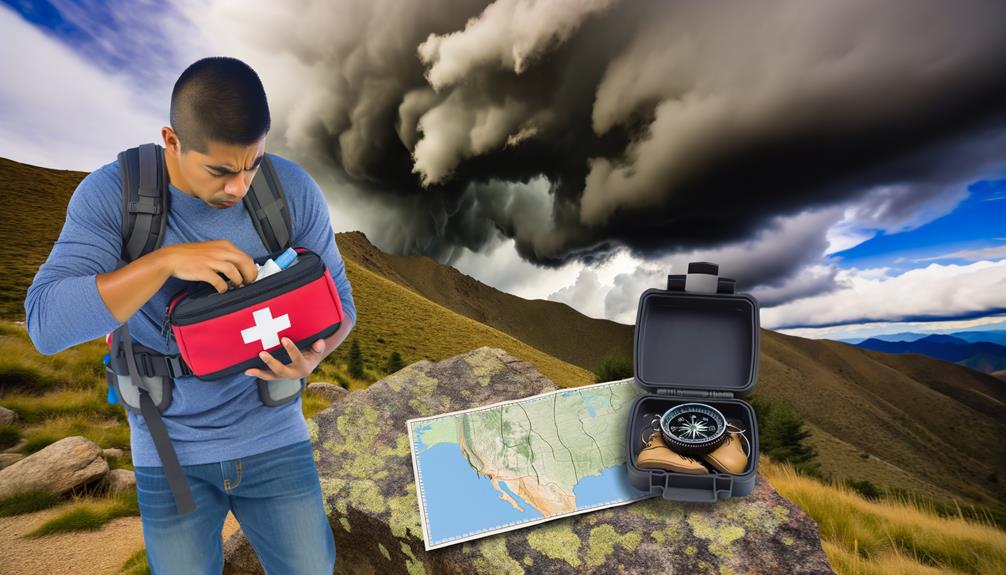
In the realm of hiking, effectively handling emergency situations is an essential skill that requires foreknowledge of key emergency numbers, the ability to recognize and respond to common hiking crises, and a calm, practical approach when faced with unexpected challenges.
- Foreknowledge of Emergency Numbers:
Before embarking on your journey, save the park's emergency number or the general emergency number, such as 911, on your phone and in a physical format. In the absence of mobile service, a personal locator beacon can be a lifesaver.
- Recognizing and Responding to Emergencies:
Understand the signs of common hiking emergencies like injuries, getting lost, or encountering wildlife. Train yourself in basic first aid and learn how to signal for help.
- Staying Calm:
If you find yourself lost on the trail, stay calm. Use available navigation tools, and trust your instincts.
- Calling for Help:
If communication is possible, inform authorities immediately. If not, designate someone in your group to reach the nearest search and rescue point.
Appropriate Hiking Clothing
The clothing one chooses for a hike can significantly impact their experience and safety. It is crucial to consider weather-appropriate gear, the importance of layering, and the necessity of comfortable, protective footwear.
This section will guide you through these critical factors ensuring you are well-prepared and comfortable throughout your hiking journey.
Choosing Weather-Appropriate Gear
Often overlooked, selecting weather-appropriate gear significantly contributes to a safe and enjoyable hiking experience. When choosing weather-appropriate gear, consider the following:
- Wear moisture-wicking clothing: Invest in clothing made of materials like nylon or polyester which help keep you dry and comfortable on the trail.
- Avoid cotton: Cotton absorbs moisture, making you feel cold and wet during your hike.
- Ensure sturdy and comfortable footwear: Good hiking shoes provide necessary protection and traction on the trail.
- Consider the weather conditions: Pack additional layers for cold weather, or sun protection gear for hot, sunny days.
Remember that appropriate clothing enhances your hiking experience, making it safer and more enjoyable. Therefore, careful selection is essential for a memorable adventure.
Importance of Layering Clothes
Navigating through the diverse terrains and fluctuating weather conditions on hiking trails, the practice of layering clothes becomes a critical strategy to regulate body temperature and maintain comfort. Layering clothes effectively allows for quick adjustments in response to shifts in weather and activity levels. It's a simple measure that can significantly improve your hiking experience.
The importance of layering clothes can be better understood by examining its components:
| Layer Type | Function |
|---|---|
| Base Layer | Wick away moisture |
| Insulating Layer | Retain body heat |
| Outer Layer | Shield from wind and rain |
| Socks | Wick away moisture, prevent blisters |
| Extra Layers | Adapt to unexpected weather |
Footwear: Comfort and Protection
Just as layering your clothing is crucial for comfort and safety during a hike, selecting the right footwear plays an equally significant role in protecting your feet and enhancing your overall hiking experience. Here are four tips to ensure footwear comfort and protection during your hiking adventures:
- Choose sturdy and comfortable hiking shoes that offer not just protection but also support, reducing the risk of injuries.
- Invest in hiking socks made of moisture-wicking materials to keep your feet dry, helping prevent the discomfort of blisters.
- Seek expert guidance at an outdoor supplies store, ensuring that you have the right footwear for your specific needs.
- Regularly inspect your feet during the hike and carry blister dressings for immediate relief. This can make the difference between a great and a painful 68-mile hike.
Importance of Hydration and Nutrition
Maintaining proper hydration and nutrition is a critical aspect of hiking safety, fundamentally influencing energy levels, cognitive function, and overall performance on the trail. The importance of hydration and nutrition cannot be understated, as dehydration can lead to fatigue, dizziness, and diminished cognitive ability. Therefore, ensuring an adequate supply of water is vital.
Food and Water are integral parts of any hiking adventure, providing the necessary fuel for the body. Consuming nutrient-dense snacks and meals, both before and during the hike, can help maintain energy levels and prevent fatigue. This means packing enough food to meet the physical demands of the hike.
Neglecting hydration and nutrition can significantly affect your hiking experience, leading to potential safety risks. Therefore, it's crucial to understand and respect your body's needs while on the trail. A well-hydrated and nourished hiker is more likely to enjoy the journey and perform at their best.
Thus, the importance of hydration and nutrition extends beyond basic survival, contributing significantly to the overall enjoyment and safety of your hiking experience.
Using Navigation Tools Safely
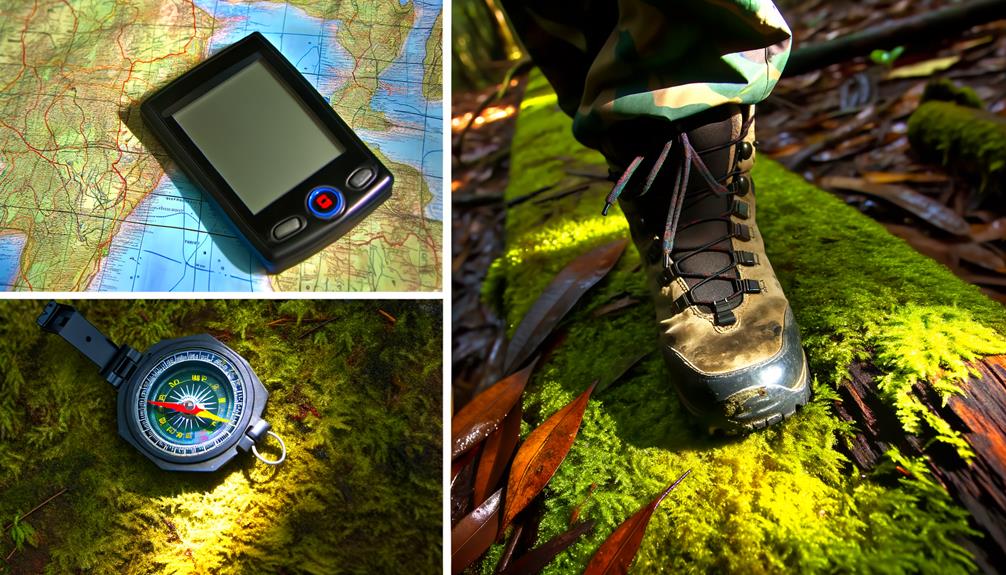
Mastering the use of navigation tools, such as maps, compasses, and GPS devices, is a crucial aspect of hiking safety that ensures maintaining the correct path throughout your journey. The ability to use these tools effectively can mean the difference between a successful hike and a potentially dangerous situation.
Here are four important steps to using navigation tools safely:
- Familiarize Yourself: Before you hit the trail, spend time learning how to use your navigation tools. This includes knowing how to carry a map, operate a GPS device, and interpret map symbols.
- Regular Checks: Keep your tools easily accessible and check your location regularly. This helps to ensure that you stay on the correct path.
- Cross-Reference: Use multiple navigation tools and cross-reference them to verify your location. This helps to avoid the risk of relying on a single source which could be incorrect.
- Practice: Consider enrolling in a navigation course or practicing with your tools in controlled environments before using them in a real hike.
Maintaining the knowledge and skills to use navigation tools safely is an integral part of belonging to the hiking community. It's about confidence, preparedness, and ensuring a positive hiking experience.
Respecting the Natural Environment
As we continue to explore hiking safety, it is crucial to consider how we interact with the natural environment. Specifically, we'll address three key areas: minimizing trail impact, protecting wildlife habitats, and managing waste responsibly.
Each of these elements plays a vital role in maintaining the health and integrity of our treasured outdoor spaces.
Minimizing Trail Impact
Understanding and implementing practices to minimize trail impact is essential for preserving the integrity and beauty of our natural environments while hiking. As we partake in these outdoor adventures, we are not just hikers; we are also stewards of nature.
- Stick to Designated Trails: This can help keep trail conditions intact. Avoid creating new paths or shortcuts.
- Carry in, Carry out: All trash and leftover food should be packed out.
- Respect Wildlife: Keep a safe distance and never feed animals.
- Leave What You Find: Do not disturb natural features or artifacts.
Protecting Wildlife Habitats
In the interest of preserving the natural environment and protecting delicate wildlife habitats, hikers must adhere to several key guidelines that aid in minimizing their footprint and maintaining the ecological balance.
As responsible members of the American Hiking community, it's crucial to stay on designated trails within National Park boundaries, to protect our precious Natural Resources and avoid damaging the ecosystem.
Observing wildlife from a safe distance is crucial to avoid disturbances. Moreover, using restrooms at least 200 feet away from water sources helps prevent pollution.
Always remember to pack out all trash, including food waste and toilet paper, ensuring a clean environment for future visitors.
Following these practices, along with the specific rules and regulations for each area, is vital for the protection and preservation of wildlife habitats.
Managing Waste Responsibly
Building on the notion of protecting wildlife habitats, another integral aspect of hiking responsibly includes meticulous management of waste to maintain the purity and integrity of the natural environment. Here are some tips that can make a significant difference:
- Always dispose of your trash properly. Help preserve the park by packing out all waste.
- Minimize your use of single-use items. Consider reusable options for food and beverages.
- Follow the 'Leave No Trace' principles. This philosophy helps ensure that the environment remains undisturbed for future visitors.
- Dispose of human waste responsibly. Dig a small hole at least 200 feet away from water sources and trails.
Interactions With Other Hikers
Navigating the social dynamics on hiking trails, respectful and effective communication with fellow hikers plays an integral role in ensuring a harmonious and enjoyable outdoor experience. Interactions with other hikers can greatly enhance your time in the great outdoors, especially if you are hiking alone.
Here is a useful guideline:
| Action | Description |
|---|---|
| Greet | Greet other hikers with a friendly hello or good morning to build mutual respect and camaraderie. |
| Yield | Yield to uphill hikers and those carrying heavy loads. |
| Communicate | Indicate your intentions, such as passing or taking a break, to avoid misunderstandings. |
| Noise Level | Keep noise levels low to preserve the tranquility of the natural environment. |
| Group Size | If hiking with a group, be mindful of its size and impact. Make space for single hikers or smaller groups. |
If you find yourself in a situation where you need to go get help, it's crucial to communicate effectively with other hikers you encounter. The hiking community is one of mutual aid and respect, and fellow hikers will most likely be willing to help. Embrace these interactions and contribute to the collective experience, ensuring a safe and enjoyable hike for all.
Wildlife Encounter Guidelines

Encountering wildlife on your hiking adventures can be a thrilling experience, but it is essential to follow certain guidelines to ensure your safety and the well-being of the animals. This is particularly relevant if you plan to go hiking in State Parks across New York, where diverse species inhabit.
- Respect wildlife and observe from a safe distance: Wild animals are not used to human contact and can react unpredictably when they feel threatened. Keep a respectful distance to avoid causing them stress or provoking an attack.
- Do not feed or approach wild animals: This could disturb their natural feeding habits and make them dependent on humans for food. In some parks, feeding wildlife is punishable by law.
- Carry bear spray or other deterrents in bear country: Especially in areas known for bear sightings, it is crucial to have appropriate deterrents.
- Learn about local wildlife and their behaviors: Understand the behaviors and signs of the local wildlife. This knowledge can help you avoid potential dangers.
Follow these guidelines and the specific rules provided by the park authorities to ensure a safe and enjoyable hiking experience in the heart of nature. Remember, we are visitors in their habitat.
Weather Conditions and Hiking
Unpredictable as it may be, weather plays a crucial role in planning and executing a safe and enjoyable hiking trip. Understanding the interplay between weather conditions and hiking is key to a fulfilling journey. It's advisable to check the weather forecast before setting out and be prepared for sudden changes.
Essential gear for weather-related emergencies should always be part of your hiking kit. This includes a rain jacket, extra clothing, and sun protection. The ability to dress in layers is also a practical way to adapt to temperature changes.
Staying informed about weather patterns and signs of incoming storms during your hike is equally crucial. If the conditions deteriorate significantly, the best decision is to turn back. Always remember that your safety is paramount.
| Weather Condition | Hiking Impact | Safety Measure |
|---|---|---|
| Thunderstorms | High risk of lightning strikes | Turn back or seek shelter |
| Extreme Heat | Risk of dehydration, heat exhaustion | Stay hydrated, rest in shade |
| Cold Temperatures | Risk of hypothermia | Layer clothing, stay dry |
| Rain | Slippery trails, hypothermia | Wear waterproof gear |
| Sun | Risk of sunburn, dehydration | Wear sun protection, stay hydrated |
Importance of Turning Back

Often underestimated, the decision to turn back during a hike when conditions become unsafe is a vital aspect of ensuring personal safety and preventing potential emergencies on the trail. Comprehending the importance of turning back can be the difference between a memorable experience and a disastrous outing.
There are several key reasons why turning back is crucial:
- Safety First: The wilderness is unpredictable. Weather can change rapidly, trails can become impassable, or you might experience a health issue. Always leave room for the decision to turn back and prioritize safety over reaching the destination.
- Emergency Prevention: Turning back when conditions deteriorate helps avoid situations that can escalate into an emergency situation.
- Responsible Decision-Making: Being prepared to turn back is a sign of a responsible hiker who values personal well-being and respects nature's unpredictability.
- Adaptive Response: Recognizing and responding to changing conditions on the trail is a critical skill every hiker needs to develop.
Frequently Asked Questions
What Safety Precautions Must Be Taken to Hike on the Trail?
To ensure safety while hiking, prepare for potential wildlife encounters, monitor weather conditions, and equip yourself with emergency signaling devices. These precautions can help mitigate risks and enhance your overall outdoor adventure experience.
What Is the #1 Etiquette Rule While Hiking?
The paramount rule in trail manners and hiker courtesy is respect for nature. This entails staying on designated paths, not disturbing wildlife, and ensuring you leave no trace by responsibly disposing of any waste.
How to Safely Hike off Trail?
To safely hike off trail, familiarize yourself with terrain navigation and anticipate wildlife encounters. Inform others of your plans, carry essential gear, and consider potential off-trail camping spots. Always prioritize safety and trust your instincts.
What Is the Most Common Mistakes First Time Hikers Make?
Common mistakes by novice hikers include improper gear selection, underestimating the importance of hydration, and poor trail navigation skills. These errors often result from lack of planning and preparation, leading to potential safety risks.
Conclusion
In conclusion, hiking safety is paramount for a successful and enjoyable outdoor adventure. Adherence to these 15 safety tips, ranging from pre-hike preparation to wildlife encounters, significantly reduces the risk of mishaps.
For instance, in 2018, a group of inexperienced hikers got lost in the Rocky Mountains due to neglecting these precautions. Their rescue emphasized the importance of proper navigation tools and planning.
Thus, it is imperative for all hikers, novice or experienced, to prioritize safety before embarking on their journey.

With years of extensive experience, I specialize in evaluating waterproof hiking shoe options across various brands. My goal is to offer valuable insights and recommendations, enhancing your hiking experience with tips and suggestions for a more adventurous and comfortable journey.

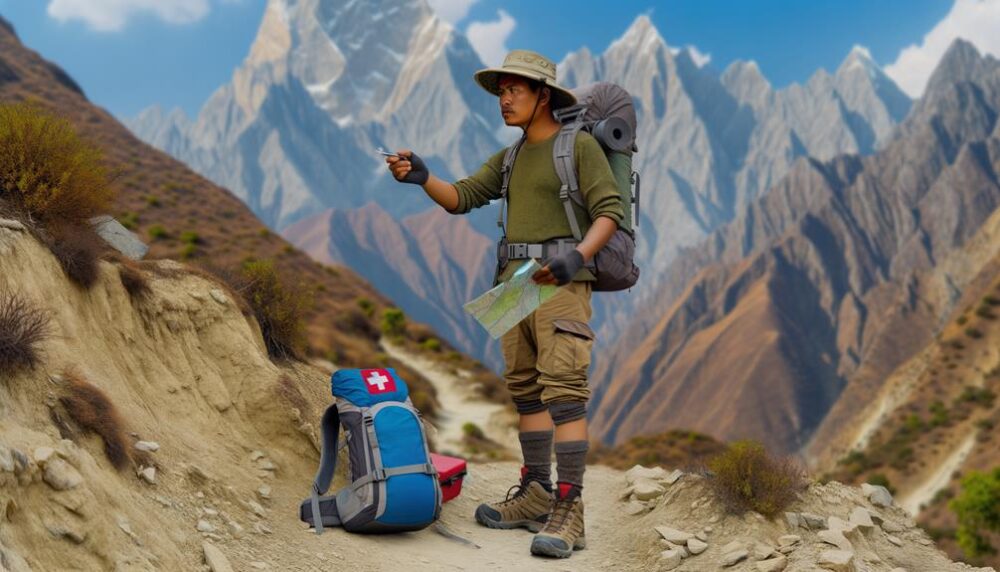
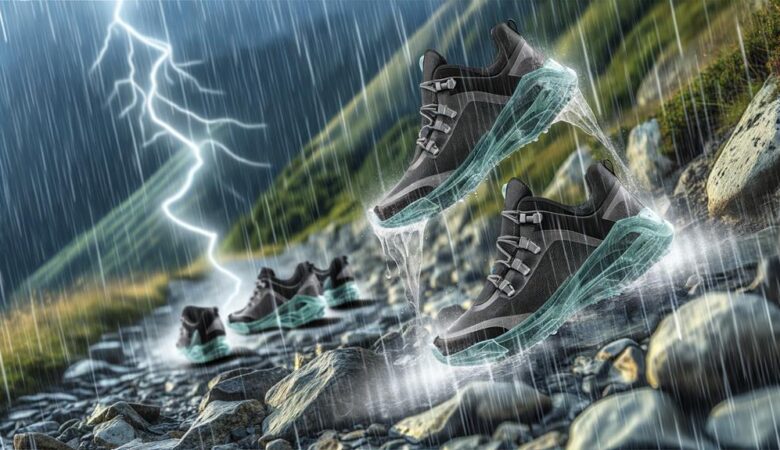
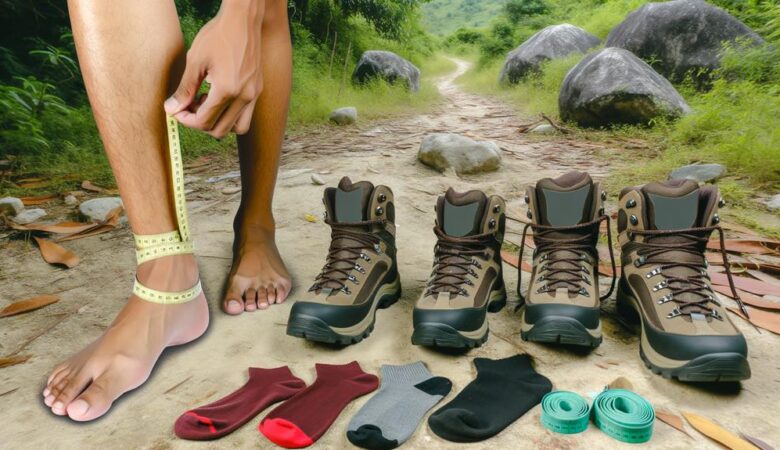
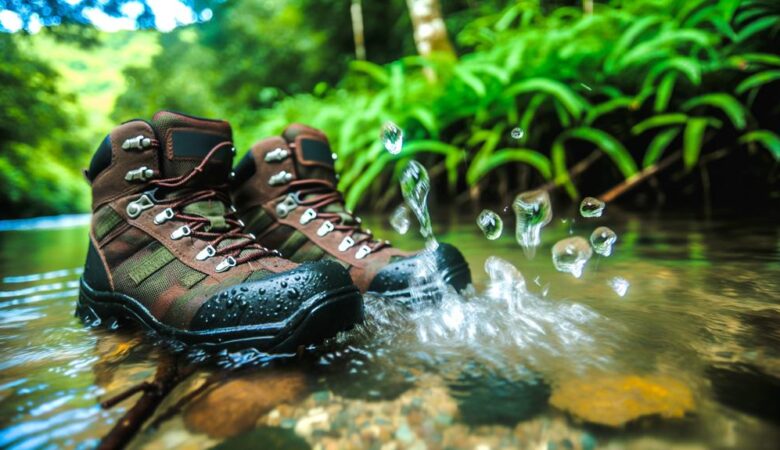

Leave a Reply